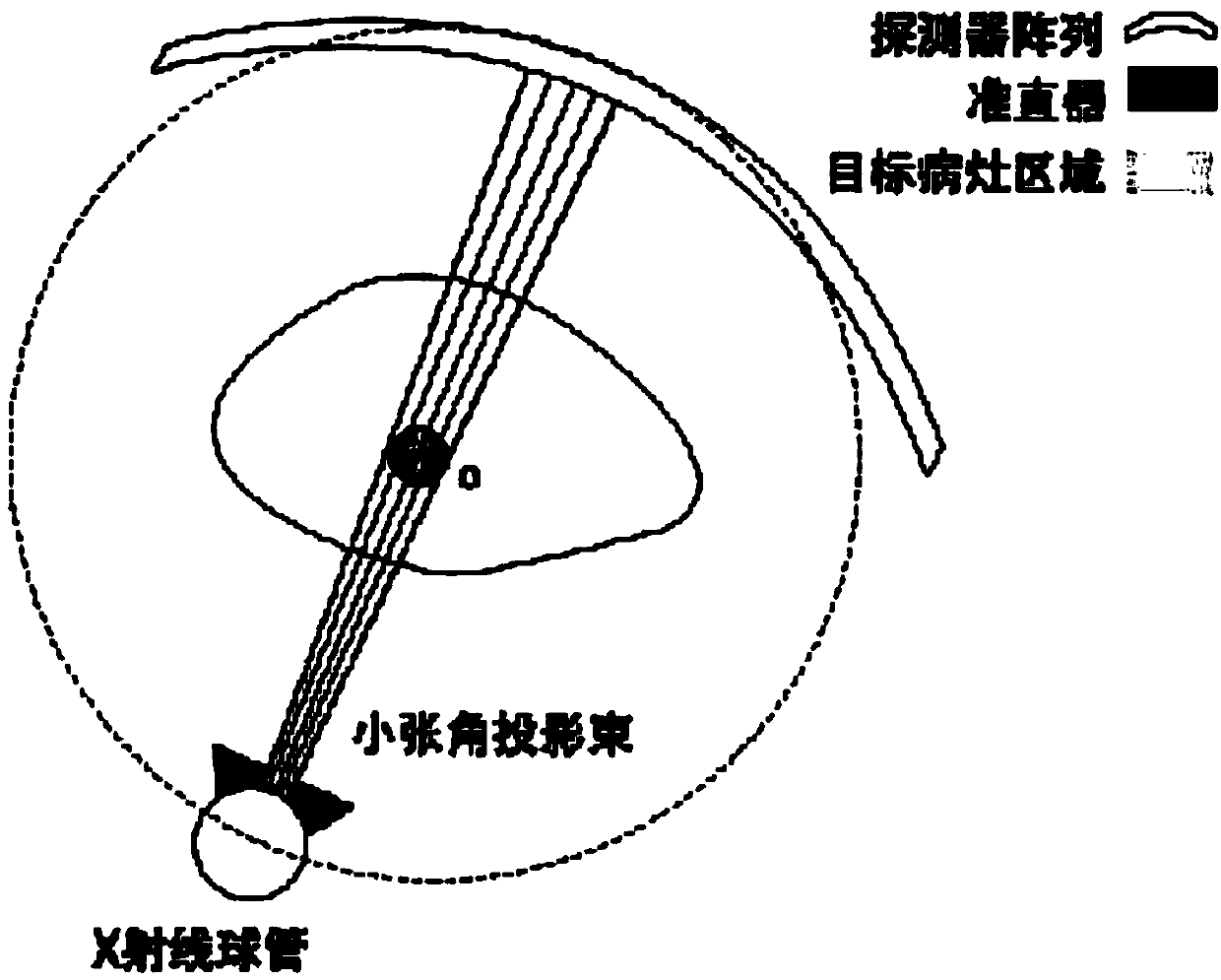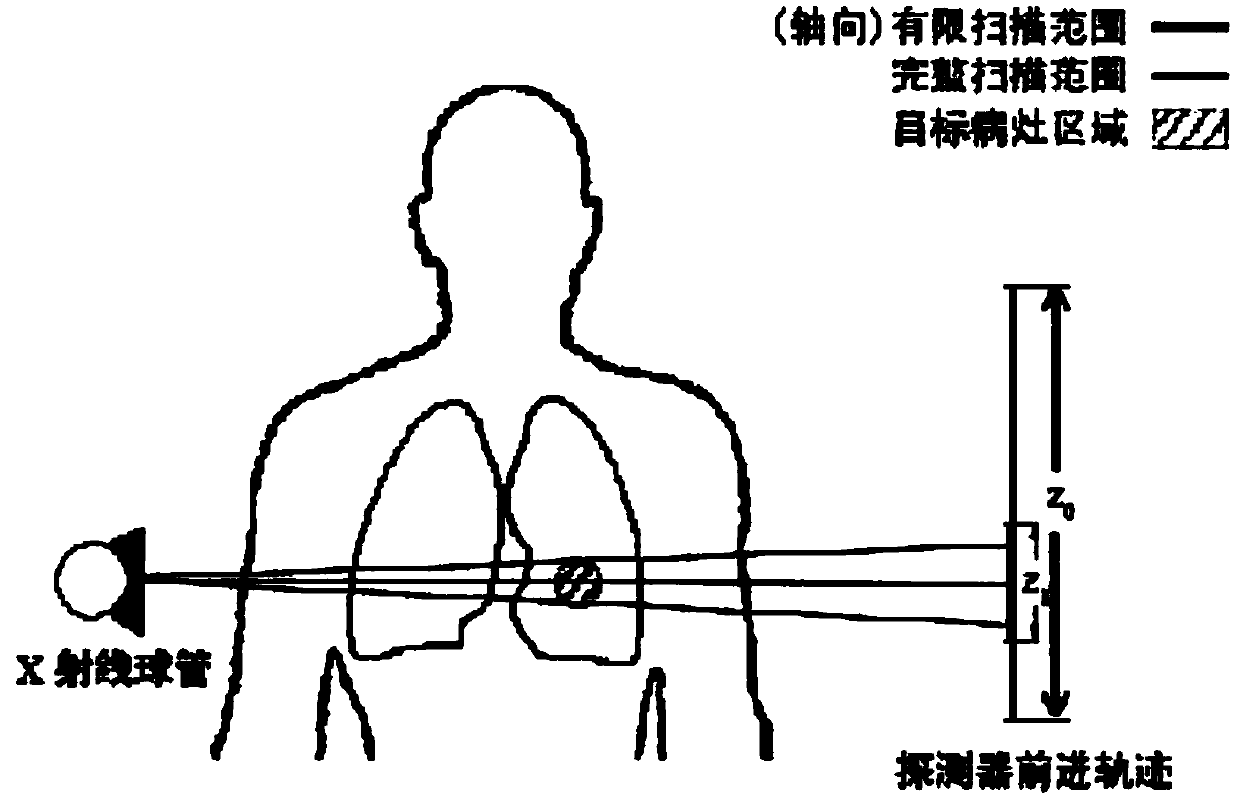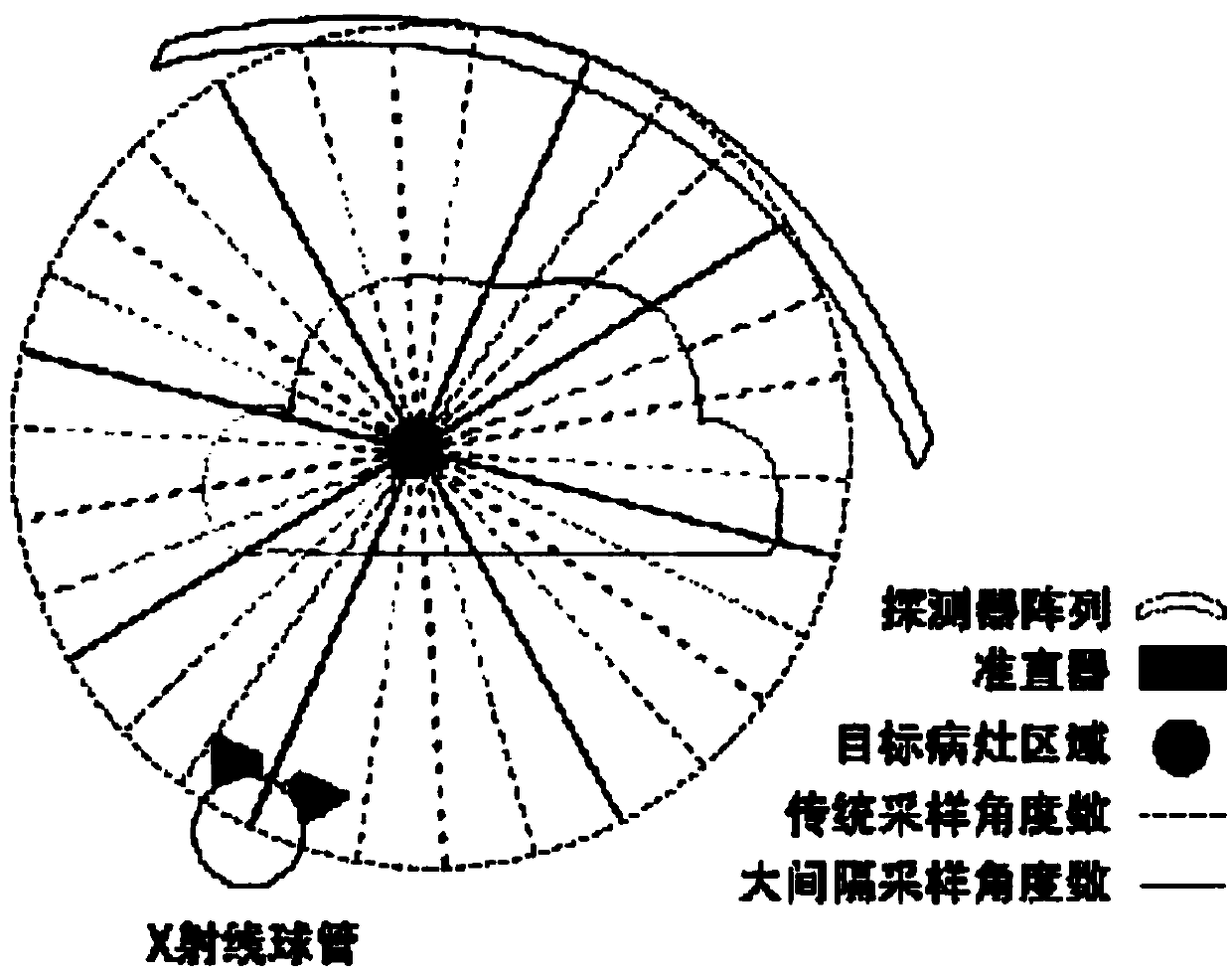CT scanning method of low radiation dosage
A CT scanning, low-radiation technology, used in computed tomography scanners, echo tomography, etc., can solve the problems of CT image noise signal enhancement, improve lesions, image quality degradation, etc., to reduce X-ray radiation dose and improve quality. , the effect of fast reconstruction speed
- Summary
- Abstract
- Description
- Claims
- Application Information
AI Technical Summary
Problems solved by technology
Method used
Image
Examples
Embodiment 1
[0049] Target lesion: pulmonary nodule
[0050] Scanning method: the scanning center is positioned near the nodules, the scanning range is preset, and the scanning covers the local lung area
[0051] Use the previous lung examination CT scan of the same patient to locate and scan the current lesion area. The specific steps are as follows:
[0052] Step 1. According to the position of the pulmonary nodule confirmed by the previous CT scan, the three-dimensional position of the target lesion is estimated and positioned. The doctor predicts the growth of the lesion to estimate the size of the nodule, and determines the reconstruction range required by the CT scan.
[0053] Step 2. Design a CT scanning method with a limited number of projections according to the staging situation and imaging requirements of the latest pulmonary nodules. In this embodiment, the scanning method can be designed from the following three aspects: limited cross-sectional design, first outline the circu...
Embodiment 2
[0058] Target lesion: intracranial calcification
[0059] Scanning method: The scanning center is positioned to the calcification point of the brain, and the scanning range and interval rotation angle are preset. The scan covers a localized brain area.
[0060] Also use the CT image of the same patient with previous calcified lesions to locate and scan the area near the target intracranial calcified point. The specific steps are as follows:
[0061] Step 1. The doctor locates the three-dimensional position of the target calcification, and estimates the reconstruction range of the CT scan.
[0062] Step 2. Design the CT scanning method with limited number of projections. In this embodiment, the limited cross-sectional scanning range is related to the preset CT reconstruction range. Make the marker point at the rotation center of the CT scan, and select the detector width from the reconstruction range to ensure coverage of the entire reconstruction area; the design of the limi...
PUM
 Login to View More
Login to View More Abstract
Description
Claims
Application Information
 Login to View More
Login to View More - R&D
- Intellectual Property
- Life Sciences
- Materials
- Tech Scout
- Unparalleled Data Quality
- Higher Quality Content
- 60% Fewer Hallucinations
Browse by: Latest US Patents, China's latest patents, Technical Efficacy Thesaurus, Application Domain, Technology Topic, Popular Technical Reports.
© 2025 PatSnap. All rights reserved.Legal|Privacy policy|Modern Slavery Act Transparency Statement|Sitemap|About US| Contact US: help@patsnap.com



